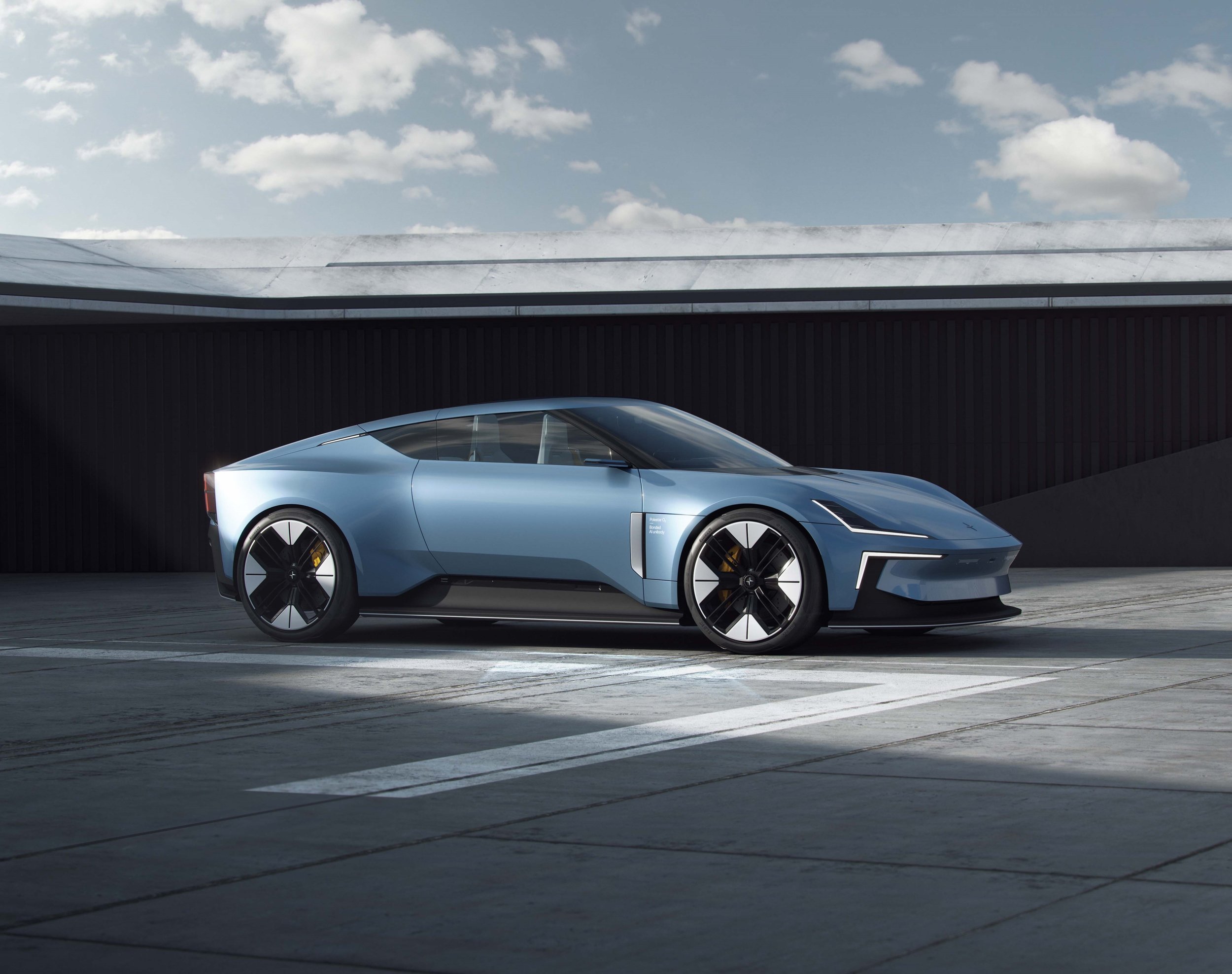Fortfarande Lagom
Making some sense of the Volvo Concept Recharge
Above all, it’s a Volvo (photo © Volvo)
Italy has sprezzatura, Denmark has hygge and Sweden has lagom - a single adjective that, purportedly, stands for an entire nation’s mindset and hence way of life. In the case of Sverige, said adjective stands for ‘good enough’ - something that suits all needs and meets any meaningful criteria in an effective, moderate and, one could argue, inherently Protestant way. Without any ostentation, excess or bravado.
Intriguingly, the success story of Volvo, as written since the Swedish car maker was taken over by Geely, is far from lagom: In terms of sales and prestige, Volvo’s growth has been anything but moderate since the second-generation XC90, the first car of the current generation of products, was launched in 2015. Some of which is to do with the fact that these Volvos themselves aren’t all that lagom, after all. For they do not merely work - they impress, they go the extra mile, in ever-so-subtle, yet effective a manner.
Like the many other great names failing at turning inherent prestige into actual success, pre-Geely Volvo had already abandoned lagom in favour of a quest to lend itself a more youthful, performance-oriented appeal. This not only diluted the brand, but also posed a threat to the values that had made Volvo a household name in the first place, as only the still outstanding seats and thoughtful ergonomics seemed to be obvious embodiments the Swedish mindset that had previously informed what Volvo stands for.
Swedish House Mafia (photo © Volvo)
Under Volvo’s then incoming chief designer, Thomas Ingenlath, that process was was stopped and, to a certain extent, reversed - but a fully-fledged return to lagom this didn’t constitute, either. For instead of almost bashfully denying their status as expensive, superior motor cars, the post-2015 Volvos discreetly, yet proudly suggested they were at least as well-made and wrought as any German competitor. As this subliminal claim was backed up by superior design, this measured self-confidence made all the difference, and must be considered one of the pillars of Volvo’s current success.
Protestant ethic (photo © Volvo)
Given the immense appreciation of the design of Volvo’s current range, finding forms for these cars' successors can safely be assumed to be among the most challenging tasks in the automotive design industry at present. For too careful an evolution might result in the company’s momentum getting stalled. Too cocky an approach could threaten Volvo’s reputation as the most mindful (in the actual meaning of the word) of prestige car makers.
Face of the future (photo © Volvo)
By the looks of the Volvo Concept Recharge recently unveiled, an understated return to lagom seems to be the path chosen by Robin Page, Thomas Ingenlath’s successor, and his team. The particularly sober graphics, upright, yet not imposing stance and, most obviously, vertical rear certainly suggest as much. Moreover, instead of engaging in the Grille Wars in any way, Volvo designers have chosen to completely rely on the brand’s characteristic logo-cum-diagonal-bar graphic to create an impression upfront instead, without any frame or shield whatsoever. Only the ‘Thor’s Hammer’ light graphic was allowed to remain, in order to support the non-grille.
Baby, it’s cold inside! (photo © Volvo)
The interior (judging only by the renderings published so far) is a different matter. Lacking the cosy appeal that has set recent Volvo cabins apart from the competition, it appears rather too white and tablet-reliant to lend any impression of warmth during a dark, cold Luleå (or Milwaukee) morning. Then again, actual photos of the cabin might mitigate that judgement somewhat, though the complete absence of the kind of physical controls Volvo used to be renowned for would remain lamentable even so.
The overall packaging of Concept Recharge is also interesting, as it seems to act as an attempt at creating an estate-SUV hybrid-of-sorts, albeit one favouring the former’s characteristics. With its raised seating position and spacious interior, it certainly provides very few excuses for choosing a heavier, bulkier all-terrain vehicle over it. Again, such a rational solution to the SUV conundrum would seem to be in keeping with the lagom ethos.
Taking an upright stance (photo © Volvo)
If there is an elephant in the room, it comes in the sleek shape of the Polestar Precept concept car unveiled last year. Not only as Concept Recharge shares the form of the indent on its tailgate with the Polestar 2, the line separating Volvo and its Sino-Swedish sister brand appears somewhat too obscure for comfort still. Concept Recharge’s exceedingly clean overall appearance and cool interior ambience, in fact, seem as though the Volvo brand was adopting Polestar’s extremely formalist approach. In spite of that term being of Danish origin, a bit of hygge wouldn’t go amiss here, in order to prevent family-oriented Volvo from treading on DINKY Polestar’s feet.
Same ethos, different brand (photo © Polestar)
Polestar, on the other hand, would be poorly advised to use the Chinese counterpart to lagom as guideline for differentiation purposes. For chaboduo (差不多) can be interpreted as meaning ‘good enough’, too - but definitely not in a way that would serve a supposed benchmark brand.


















Car interior designer who created some of the most significant cabins of all time, most notably the Porsche 928’s